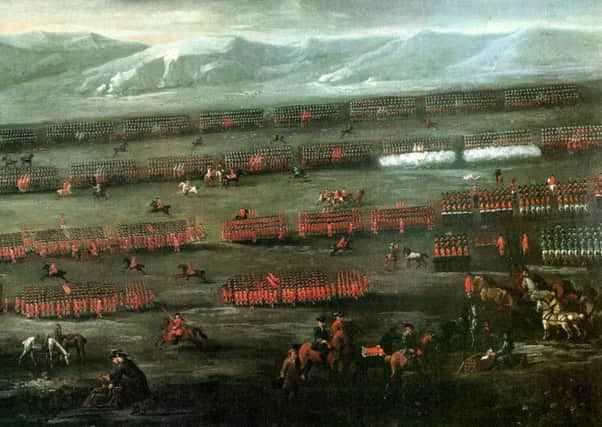Revolt sparked as forest on Sheriffmuir battlefield approved


Forestry Commission Scotland has permitted landowners to plant 62 hectares of woodland on the historic site near Dunblane.
Campaigners are to appeal the decision with Scottish Ministers with calls intensifying for the legal protection of Scotland’s battlefields.
Advertisement
Hide AdAdvertisement
Hide AdVirginia Wills, bookseller and expert on the battle who lives close to the site, said: “This is a battle site of national importance and what is happening at Sheriffmuir is like recommending that trees should be planted on The Somme.”
“Everybody is up in arms. We cannot believe that the Forestry Commission, who pledged to protect historic sites, are willing to give approval.
“The response we are getting from historians and experts, from Paris to Moscow, has been enormous. We will all be objecting to this decision.”
She added that bodies of some of the 600 men who died in the battle, an inconclusive, chaotic encounter that brought the 1715 rising to an end, are thought to remain there.
Ms Wills said: “We are of course in favour of planting trees but don’t put them on a site like this. People come from all over the world to see Sheriffmuir. We know the names of the men who fought here and the descendents come back to see the site.
“Now they may not come and there is a concern for the impact on visitors and tourism.”
The decision comes more than four years after Kippendavie Group Trust, which owns part of Sheriffmuir, first raised their proposal.
Advertisement
Hide AdAdvertisement
Hide AdThe trust said trees will be planted on the fringes of the core battlefield at the south easterly side.
Trustee Richard Aird-Stirling said: “The tree planting avoids the core battlefield and gives an excellent opportunity to greatly improve public knowledge of the battle and the site more generally as well as public access to Sheriffmuir.”
New paths and cycle tracks will connect Dunblane to Sheriffmuir and Jerah at the western edge of the Ochil Hills, he added.
Preparation of the ground will be done with archaeologists on site, Mr Aird-Stirling added, with any findings dealt with appropriately.
But tonight (Thursday), the Scottish Battlefields Trust said it was disappointed with the decision that would “change the nature of the historic battle field”.
Director Arran Johnston said: “It is a large area with significant views across the battlefield. This has always been moorland - it is Sheriffmuir - not Sheriff Forest.
“At Culloden, years of work have gone into removing commercial forestry but here, at Sheriffmuir, planting trees is still seen to be the right thing to do.
Advertisement
Hide AdAdvertisement
Hide Ad“My concern is that it is yet another example of Scotland currently being unable to protect its historic battlefields.
“There must come a time when we open our eyes to these cultural assets. We can only waste them once.
“We owe it to ourselves, future generations and past generations - those who risked their lives and fought in battles such as Sheriffmuir - to preserve battlefield sites.
“We must not be an arrogant generation.”
Forestry Commission Scotland said the scheme had been “extensively amended” from 78 hectares earlier proposed.
Cameron Maxwell, FCS Conservator for the area, said: “In coming to our decision we have listened to all the concerns raised by members of the public and other stakeholders and have worked hard to reach an acceptable proposal which does not have a significant effect on the environment.
“The revised scheme will both protect the key landscape characteristics of the battlefield and help to enhance and augment the site for visitors, with improved interpretation and access.
“As the project develops, detailed archaeological survey work and reporting will be a good opportunity to increase public engagement with the site and hopefully will improve knowledge about the battle.”
Work is scheduled to start later this summer, FCS said.
A spokesman for Historic Environment Scotland said: ““We note the consent issued by FCS and welcome that they have taken our advice into account in consenting the woodland creation project.”